
SUE BRATTLE and COLIN SIMPSON
I FIRST visited the Mediterranean port city of Marseille many years ago, at a time when it had a gritty, tough reputation. In fact, I was advised by a tour guide not to venture into the Panier district because of the threat posed by muggers and pickpockets.
Today this area has been tidied up and made tourist-friendly, and it’s one of our five must-sees. There have been many other improvements, not least the opening of the stunning Museum of European and Mediterranean Civilisations, another of our recommendations, in 2013.
Marseille was designated a European Capital of Culture that year, a further sign of its transition from rough port city to sophisticated metropolis. Despite all this, the usual big-city social problems remain, and poverty is a serious issue.
It’s 2,600 years old, making it France’s oldest city, and it’s the country’s second largest with a population in 2018 of 869,815. In normal, pre-coronavirus times, its rich history, 300 days of sunshine per year and many attractions made it a popular tourist destination. Last year more than 5 million tourists stayed there, and it’s a major player in both the cruise and convention sectors.
It has been used as a backdrop to movies such as The French Connection, Catch Me if You Can, Love Actually and The Count of Monte Cristo. Throw in some great beaches, many more museums and the beautiful Calanques national park, and you have a city with a lot going for it. To help you make the most of a stay there, here are our suggestions for the five things you must see. – CS
Le Vieux Port
Old Port
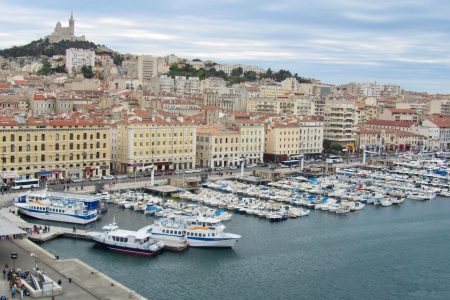
THIS huge harbour basin packed with fishing boats and leisure craft provides a stunning centrepiece to Marseille, and is the birthplace of the city. A port was first established by Greek traders in 600 BC, and the area continued as a thriving fishing and commercial centre until the 19th century.
Purpose-built deep-water docks able to handle larger boats were then developed along the coast, and the old port became a marina. Boats to attractions such as Château d’If and the Calanques leave from here, as does the popular tourist train to Notre-Dame de la Garde.
The waterside is a great place to wander as you gaze across the lines of boats and soak up the Mediterranean atmosphere. Many of Marseille’s most popular restaurants are in the streets around the port, and it’s probably the best place to sample bouillabaisse, the fish stew that is the city’s most famous dish. There are also waterside bars where football-mad locals gather to watch matches on TV.
A Ferris wheel gives great views across the marina, and another fun attraction is a stainless steel art installation where you see your reflection walking upside down on the ceiling. There’s a daily open-air fish market on the quayside, and a museum dedicated to Marseille’s famous soap. And you can head off on a gangster tour retracing “the footsteps of the great Marseille thugs” as you walk past sites associated with organised crime.
The Old Port is particularly spectacular at night, when the light from streetlamps ripples across the water and the floodlit Notre-Dame de la Garde looms above the city on its hilltop perch. All in all, this is just a terrific, atmospheric place to stroll and hang out. – CS
Notre-Dame de la Garde
Our Lady of the Guard
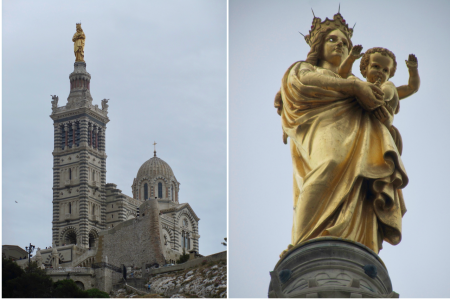
THIS is the enormous church that overlooks Marseille from a hilltop that has functioned as a lookout for centuries and is irresistible to anyone who likes panoramic views.
We walked up the hill on a blustery and cold May Sunday and waited until a service finished for a look inside. Built on a grand scale in the late 1800s, it is designed to inspire awe. It was busy, but there are side chapels where you can sit in quiet contemplation.
In previous incarnations, the site has witnessed the French Revolution (when the chapel there at the time was nationalised), and many royal visits. The current building has been written about by poets and painted by artists. For me, it was all about the views – a sea of terracotta roofs as far as you can see.
Standing up there, you can understand why the gold Virgin Mary which towers over everything keeping an eye on things is known to locals as “Good Mother”. – SB
NEED TO KNOW: Entry to the church is free; there is a small charge for the museum, which is closed on Mondays. Masses are held at 7.25 am, 9 am, and 4.30 pm. Getting there: By foot – it’s steep and takes up to an hour. By little tourist train, leaves from the Old Port. By bus – No 60 leaves from Old Port. By car – lots of parking spaces, car park shuts at 8 pm. There’s a café and gift shop. Its big festival each year is Assumption Day, August 15. Get more info at this website.
Château d’If

THIS forbidding fortress-turned-prison stands on a small fortified island 1.5 kilometres offshore from Marseille. It dates back to 1524 and was built to defend the city and the surrounding coastline from sea-borne attackers.
It later became a prison where religious and political inmates were held. It was a sort of Mediterranean Alcatraz, complete with dangerous offshore currents that made any attempt to escape extremely hazardous.
The fort is most famous as the setting for Alexandre Dumas’s novel The Count of Monte Cristo. The story tells how the fictional count escapes after 14 years in the prison, though in reality there’s no record that anyone managed to get away. One of the cells has a sign above the door that suggests the Man in the Iron Mask – a real historical figure – was incarcerated there. In fact, the masked prisoner who spent 34 years in captivity in various French prisons was never held in Château d’If.
It continued to be used as a prison until the late 19th century, when – aided by the popularity of Dumas’s book – it became a popular visitor attraction. It’s a grim-looking place from the outside, though the interior has been spruced up. As with many visits like this, you find yourself wondering what life was like for the prisoners who were held there. – CS
NEED TO KNOW: Boats to the island leave from the Quai de la Fraternité in the Old Port, at the foot of the Cannebière. There are a number of operators. Boat tickets cover the 20-minute trip plus access to the island. Entry to the fort costs 6 euro per adult; there’s free admittance for under-18s and some other groups.
Guided tours in French can be booked in advance, and you can also explore the site unaccompanied with a guide booklet available in a number of languages. There’s an exhibition about Dumas and The Count of Monte Cristo. Closed on Mondays. Tel. +33 (0)6030 62526; (0)6805 27596. Get more info at this website.
Musée des Civilisations de l'Europe et de la Méditerranée
Museum of European and Mediterranean Civilisations, known as Mucem
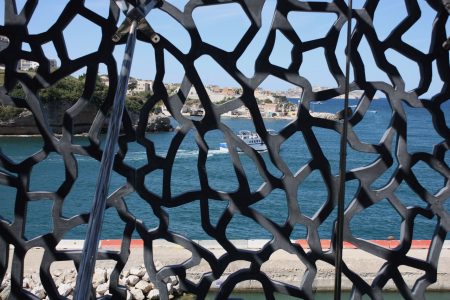
THE museum with its distinctive covering of black metal lace was built in 2013 and is one of the most spectacular I’ve seen. It stands on reclaimed land at the entry to the port of La Joliette and is attached to the Fort St-Jean by a footbridge.
Its neighbour is the Villa Méditerranée, a research and thought space with an underwater conference room. It’s a good setting for telling the story of humankind in the region. The museum houses a collection which began life in the Trocadero in Paris in 1884, lived at the National Museum of Popular Arts and Traditions in Paris from 1937-2005, and has found a home in Marseille.
It may not seem right to emphasise the building, but the whole complex is a stunning place to visit, while the rooftop views across the port connect you to the lives of the peoples of the Mediterranean. It deservedly won the Council of Europe Museum Prize for 2015. – SB
NEED TO KNOW: Open daily 10 am-8 pm, except Tuesdays. Tickets 11 to 18 euro, under-18s and certain other categories are free. A stylish temporary exhibition until December 2020 traces the history of five items of clothing – espadrilles, the tank top, the kilt, blue workwear and jogging pants. Get more info at the Mucem website.
Le Panier

MARSEILLE’S oldest district lies north of the Old Port, just a few minutes’ walk away from the quayside. Its revival dates back to 1983, when the city started restoring the area with backing from the European Commission.
Le Panier is the French word for basket. We were told the name was given to the neighbourhood because lots of bakers used to operate there. In fact, according to the city’s tourism office website, it was named after a hotel called Le Logis du Panier that stood there in the 17th century. You can’t believe everything you’re told when you’re a tourist.
It’s a great place to explore on foot as you gaze at historic buildings, walk through interesting sidestreets and stop off for a coffee in a picturesque square. Like parts of cities around the world, the district has become known for its street art. There are some intriguing shops selling hand-made clothes, vintage items and ceramics.
Guided tours are available, but it’s much more fun to do it on your own. In some places there are views across the marina to the basilica perched on its hill.
Notable buildings include the Maison Diamantée, the Hôtel de Cabre and the 12th century Hôtel Dieu – now a swanky Intercontinental hotel. The Accoules church towers over the district and stands on a site used for worship since the sixth century. As you enjoy your relaxing stroll, it’s easy to forget that you’re in the centre of a large, busy city. – CS
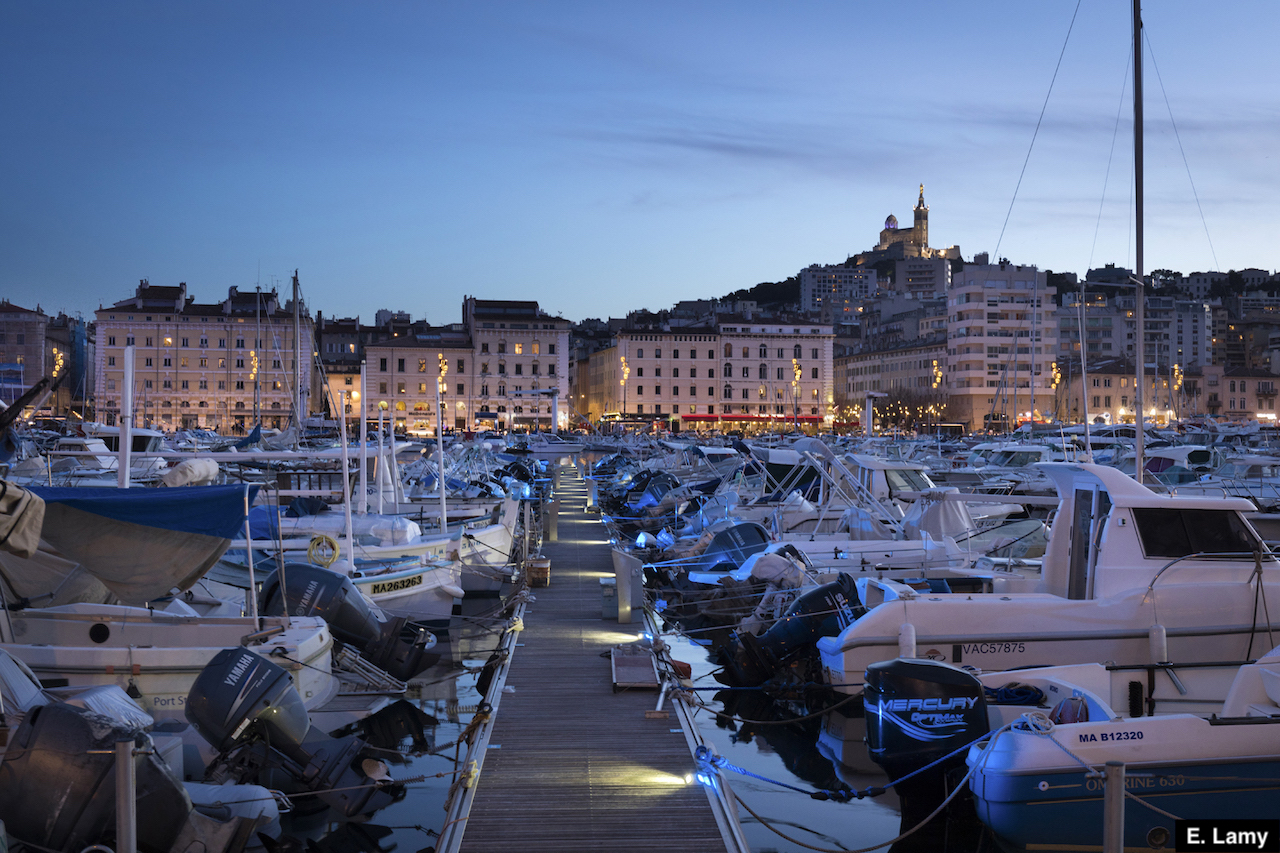

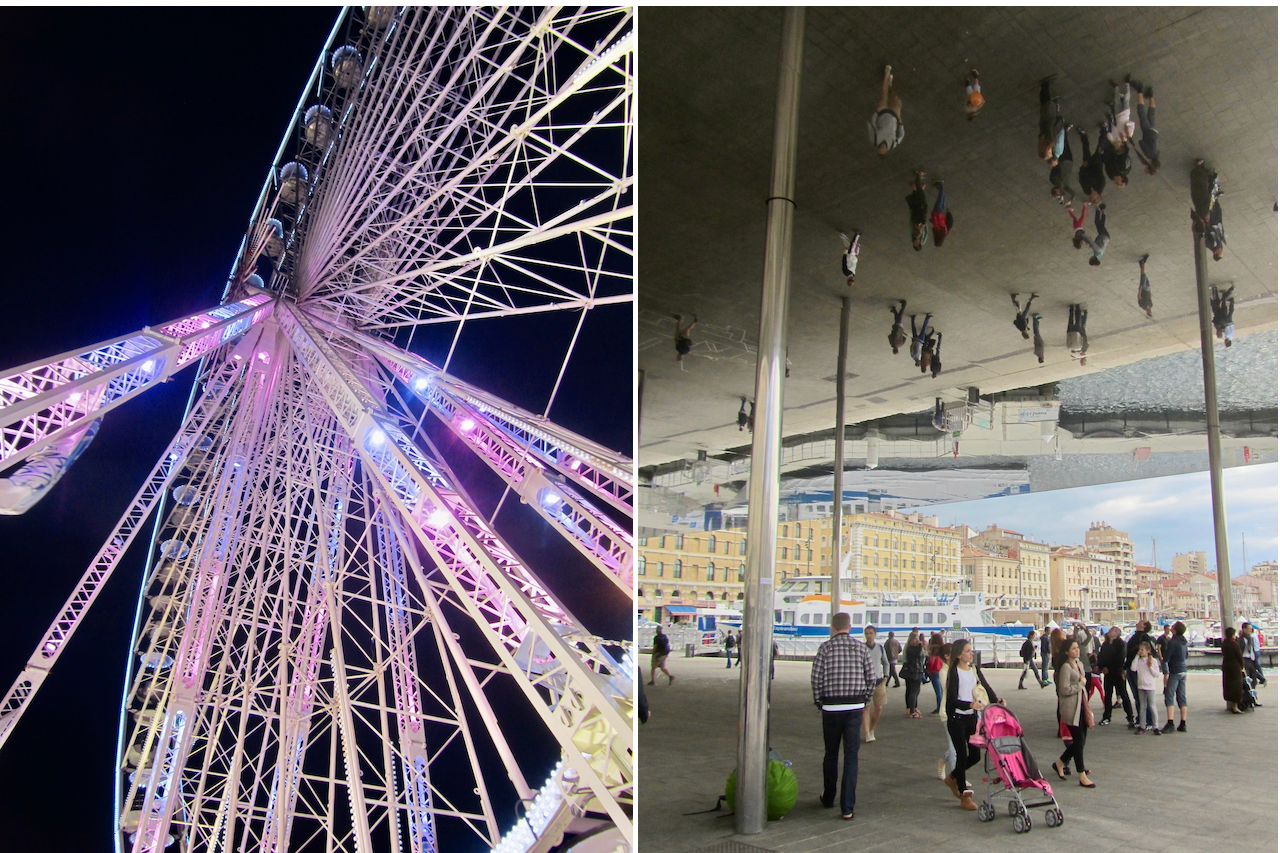
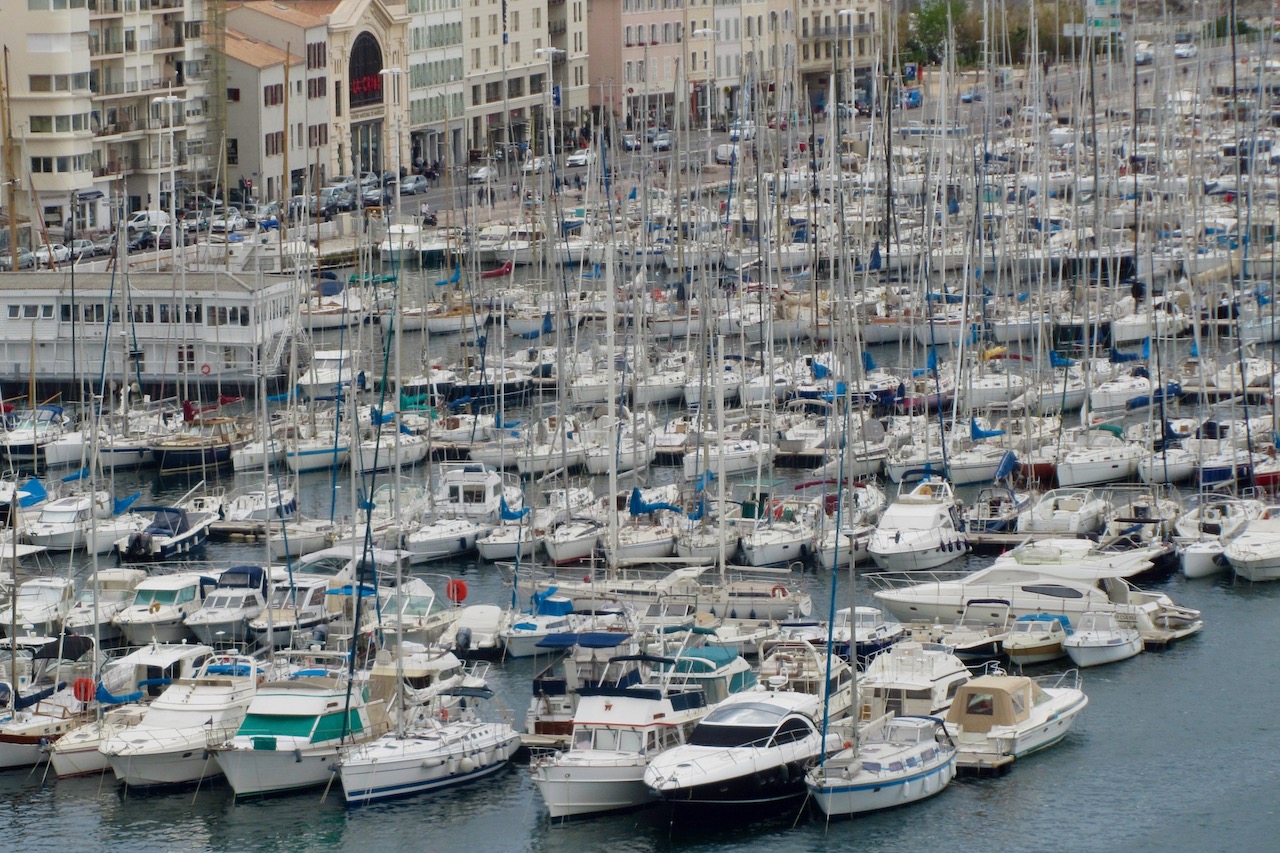
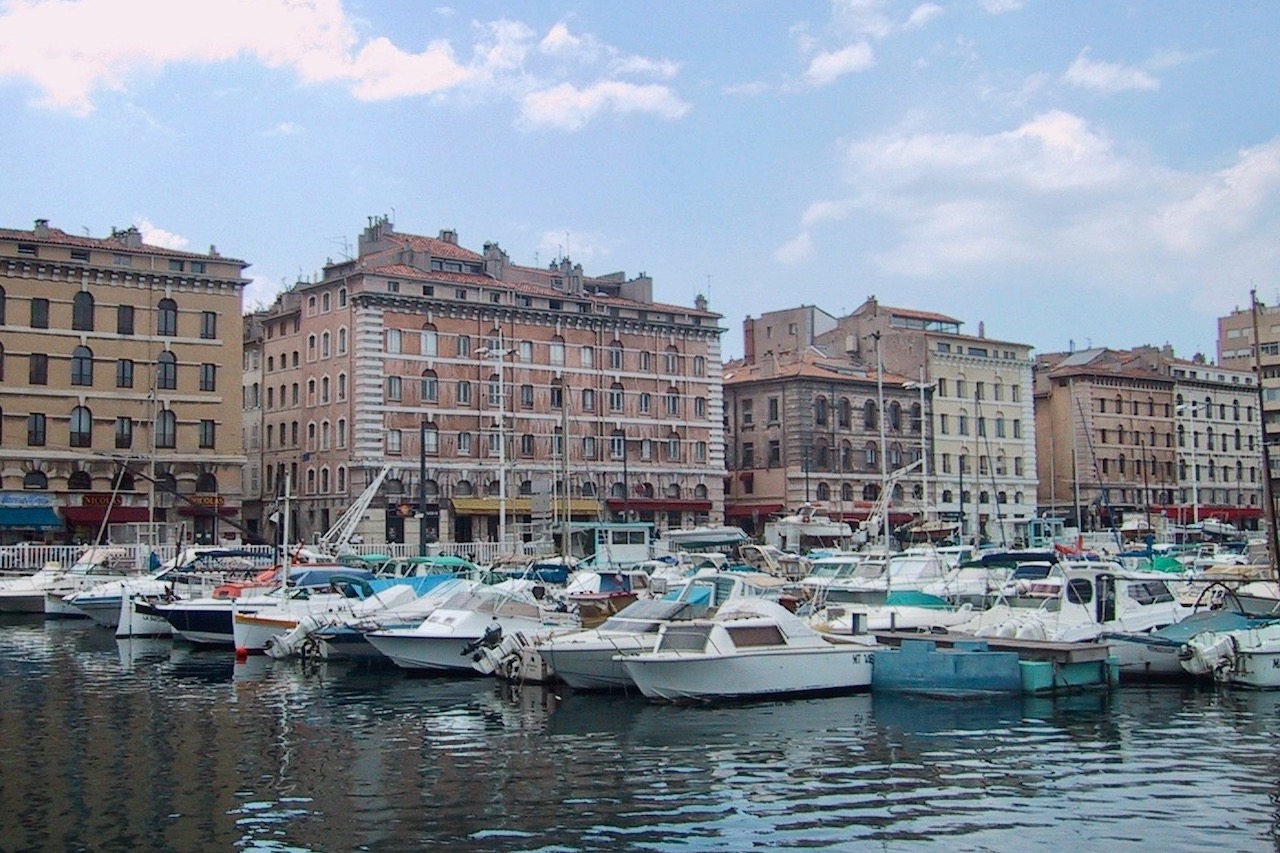
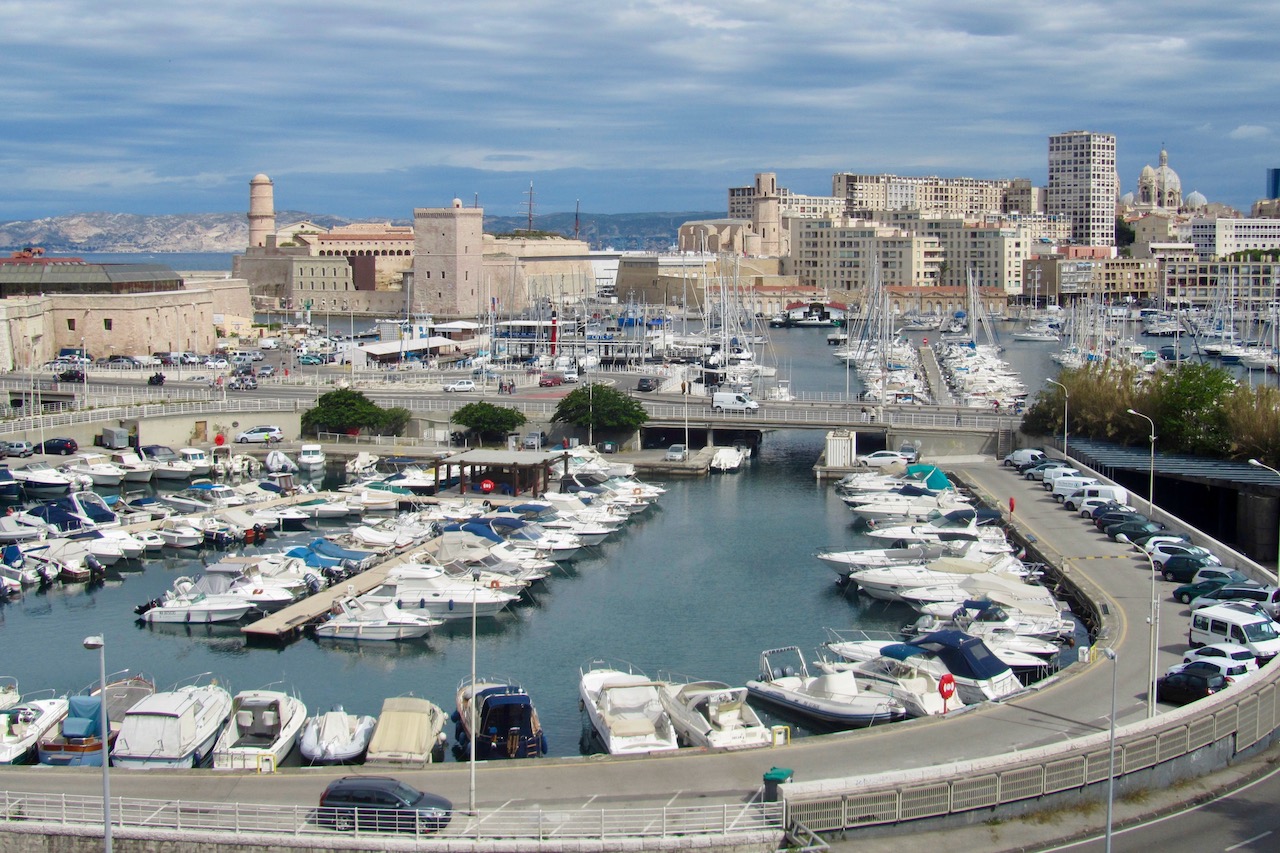
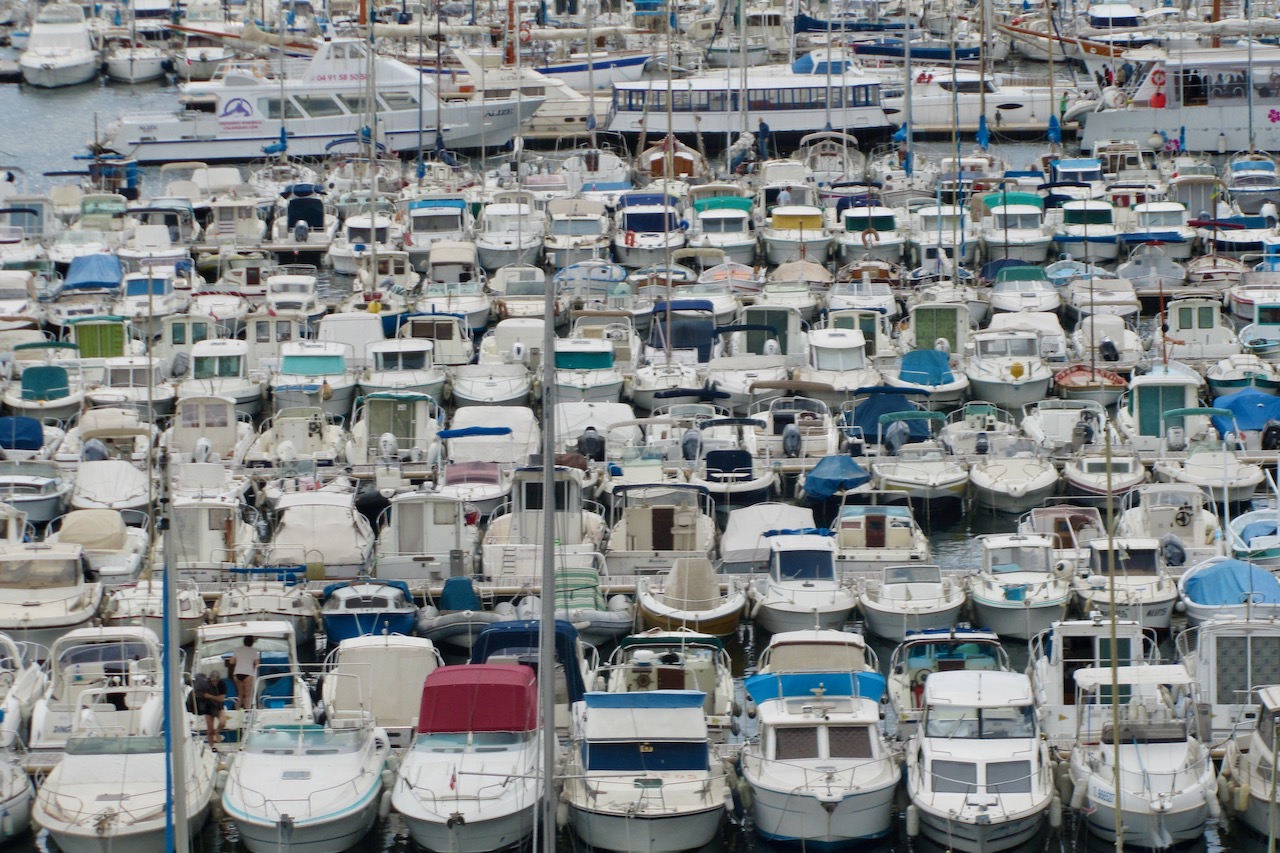

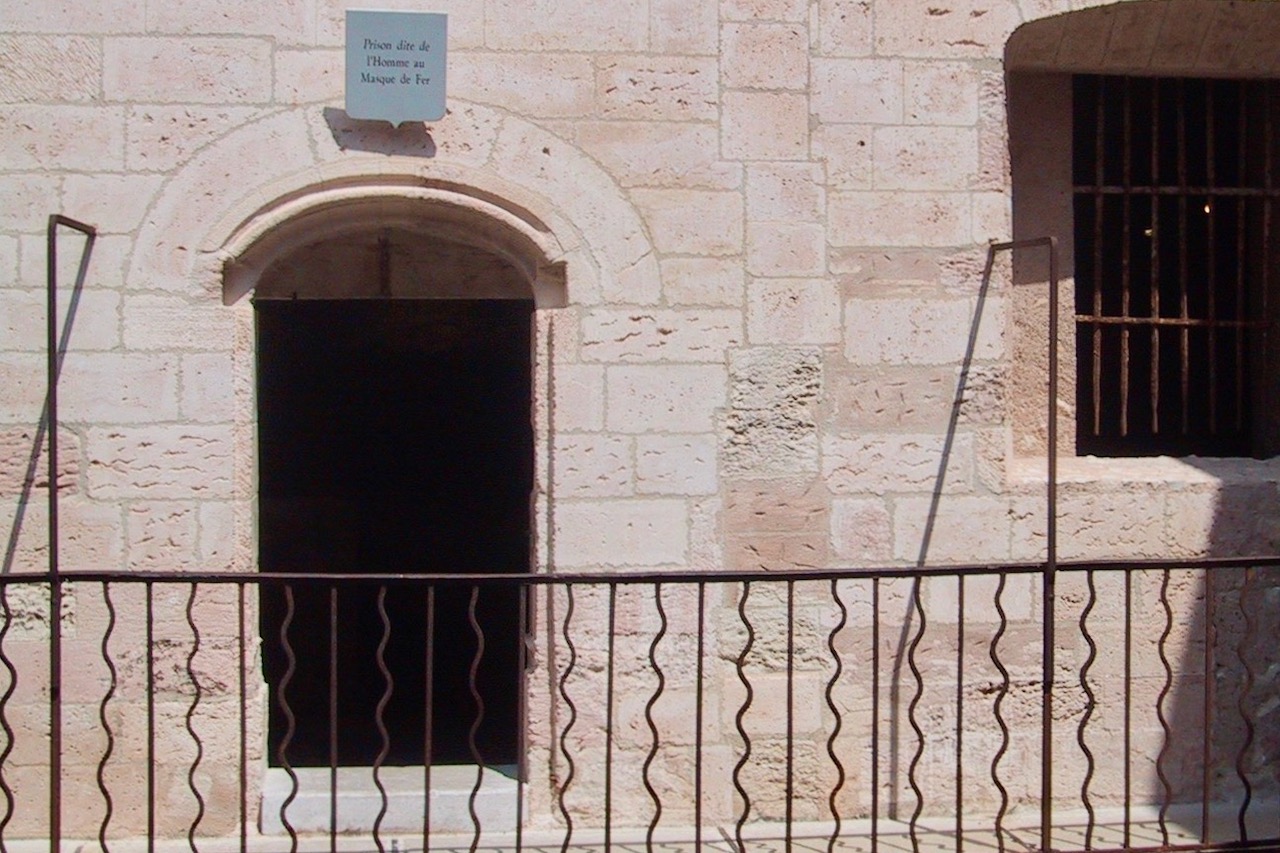
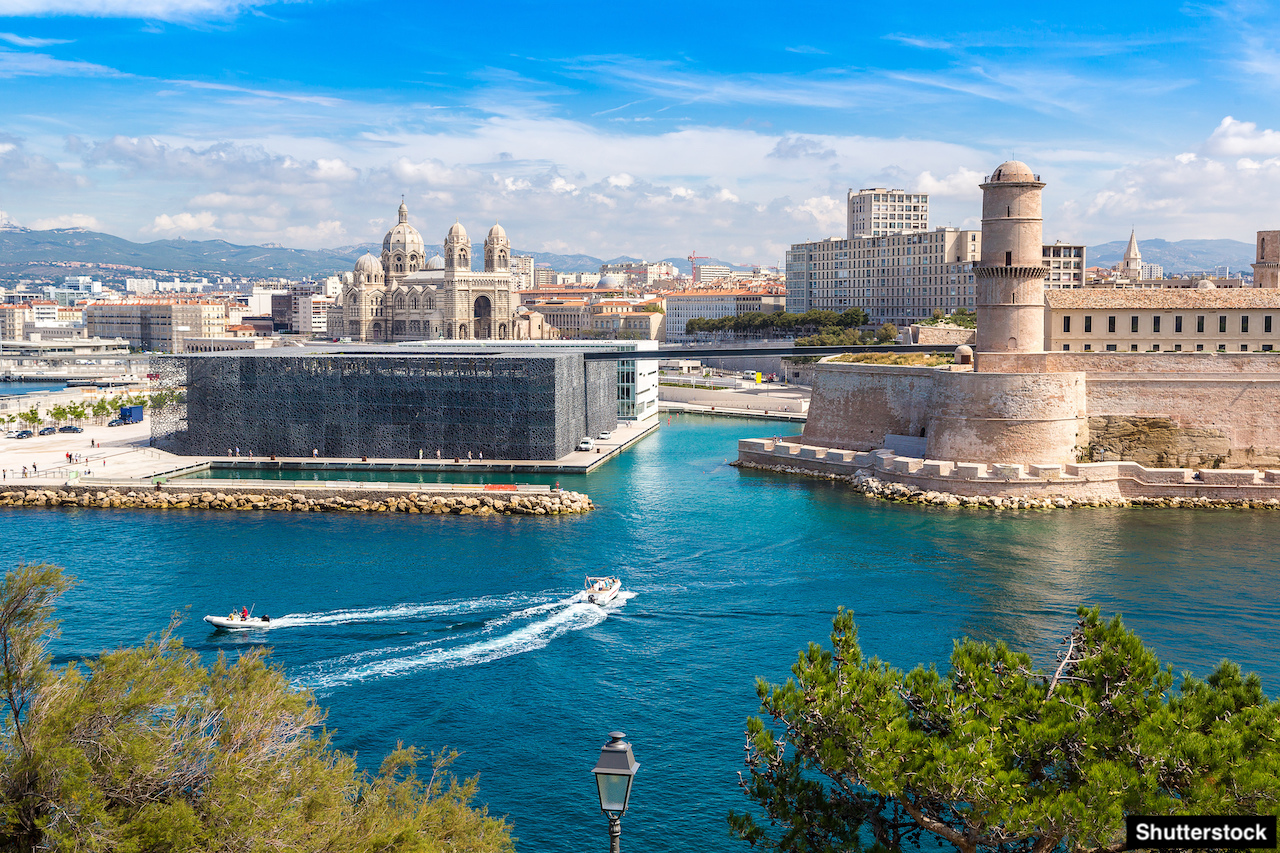

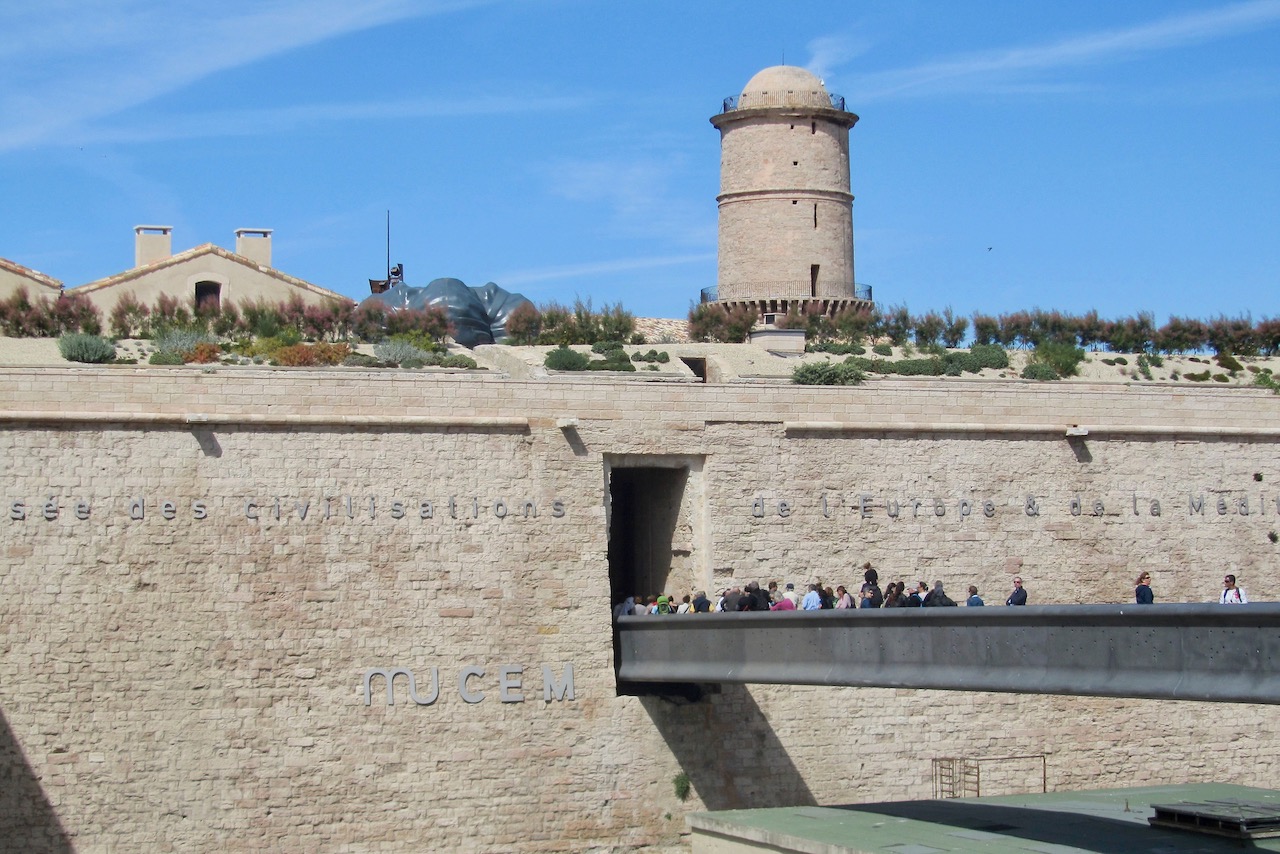
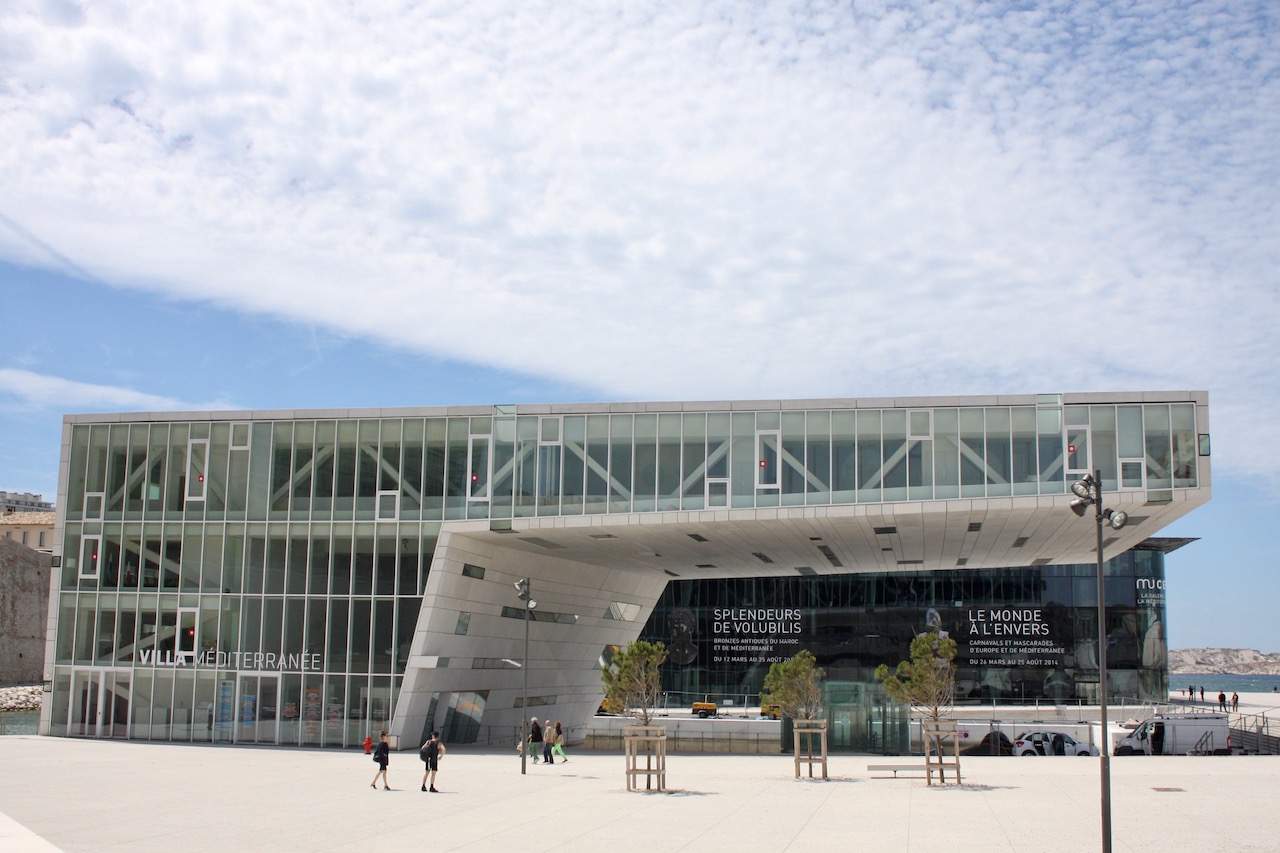

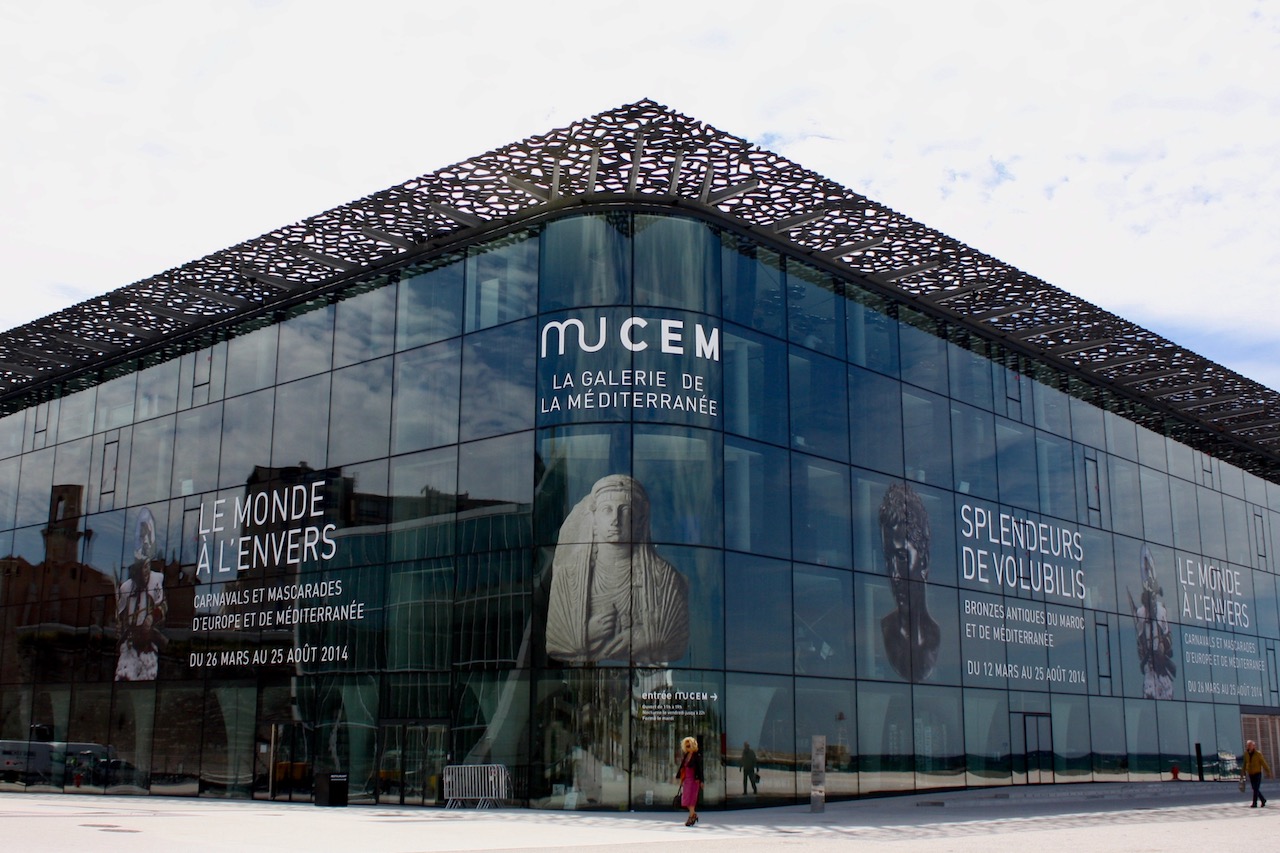
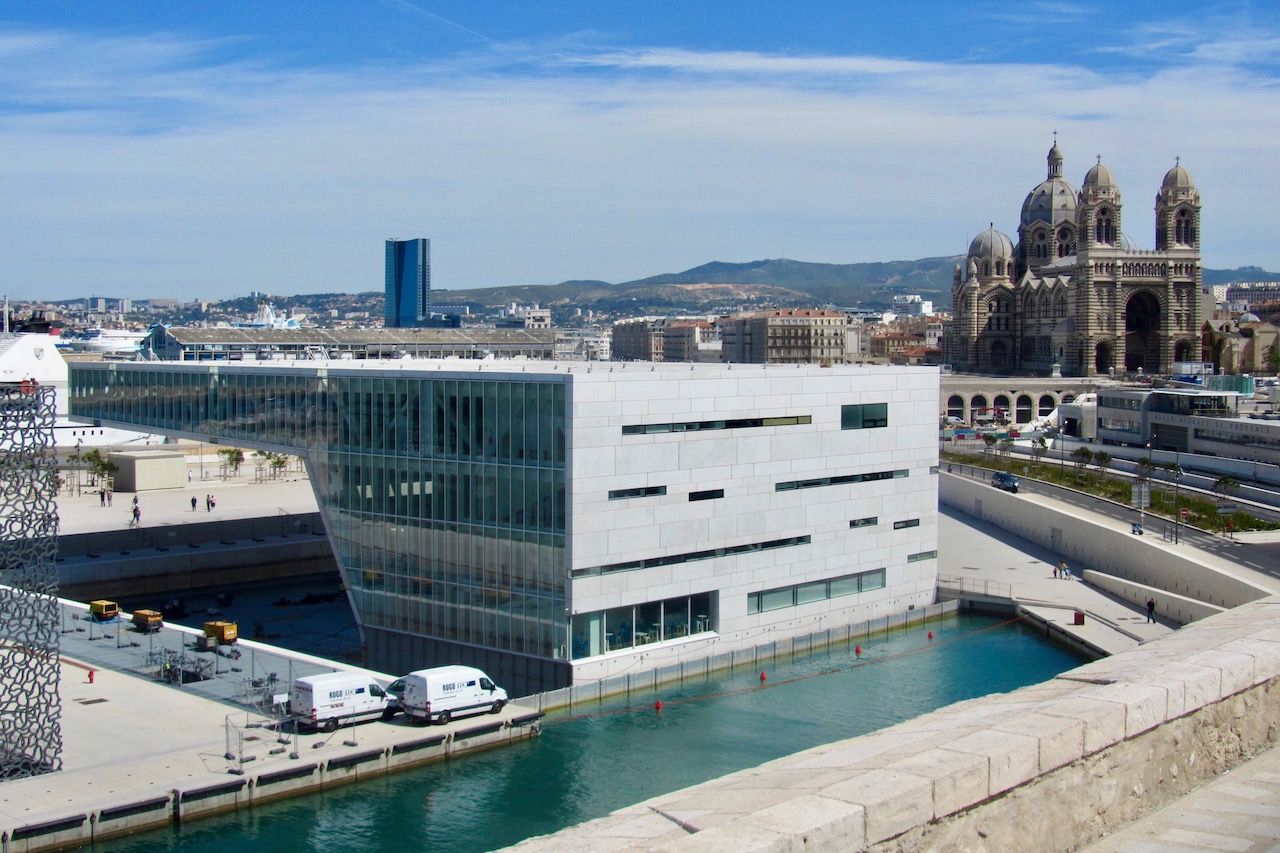


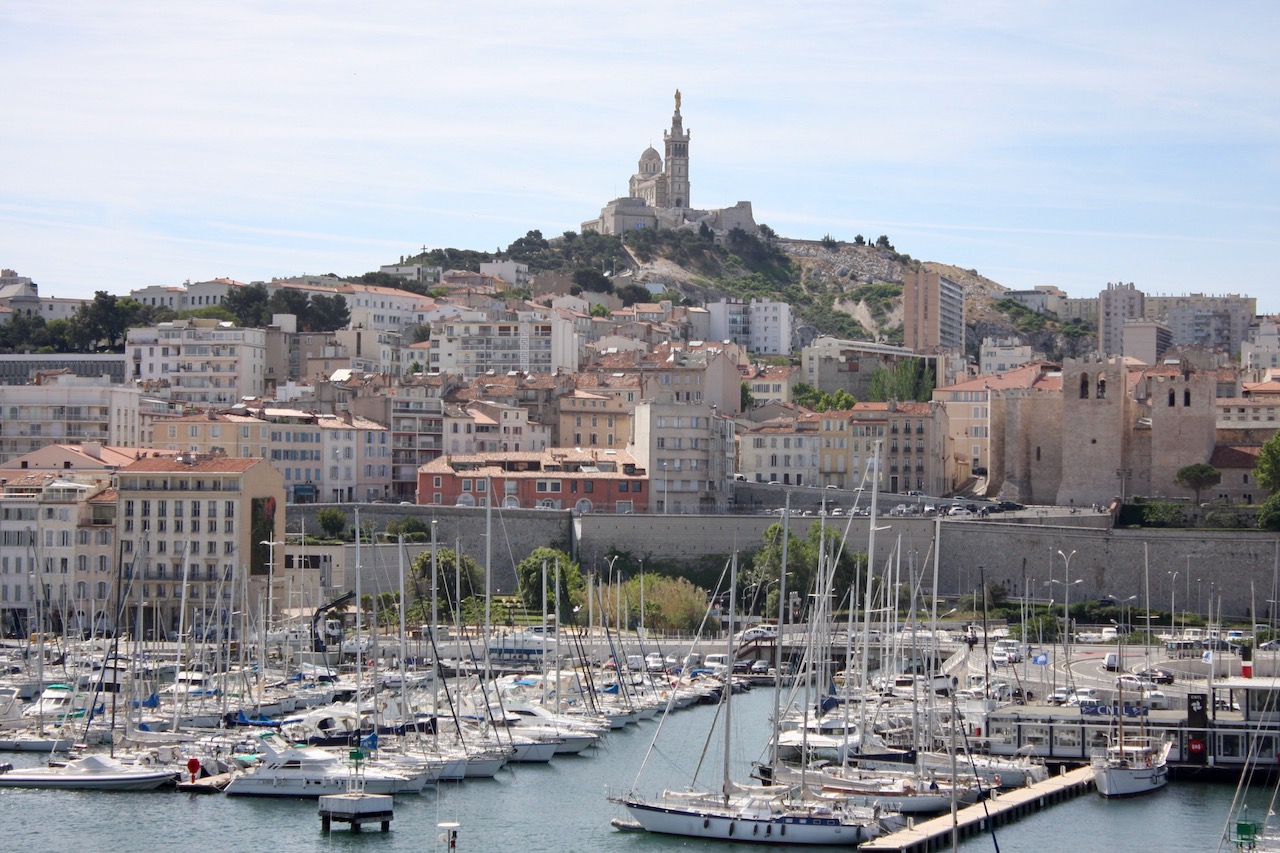
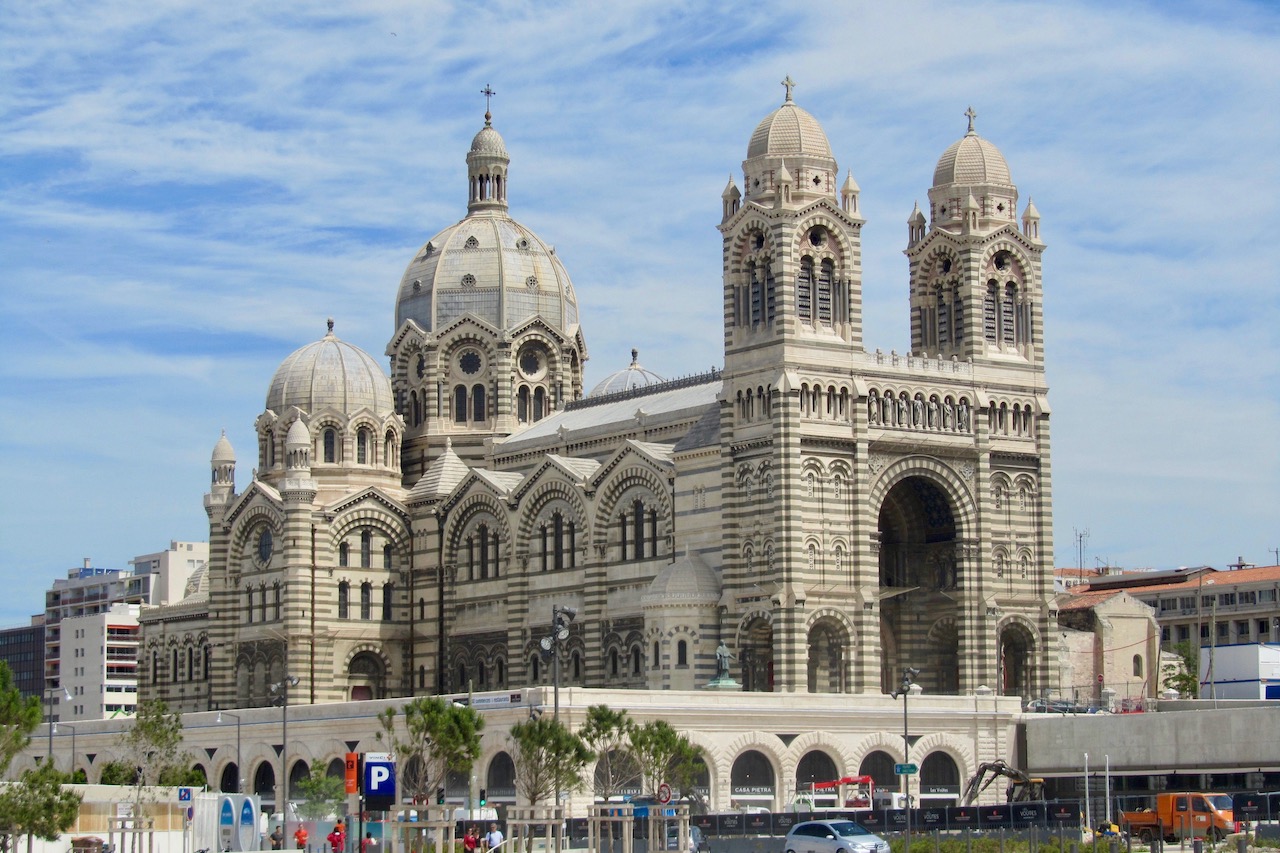


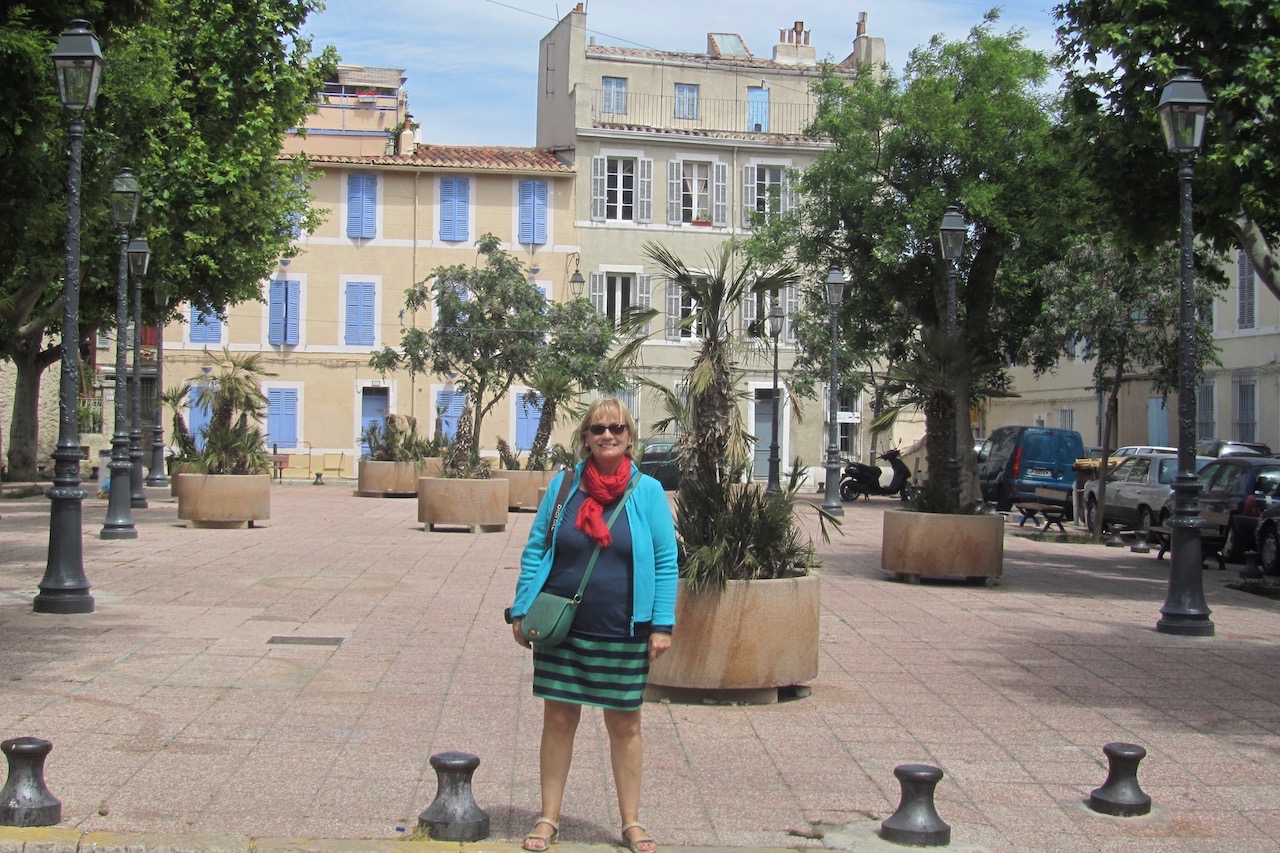
NEED TO KNOW: Marseille
GETTING THERE: By air: Marseille Provence Airport has daily flights from all over the world. Passenger info, tel +33 (0) 820 811 414 – website. Shuttle service operates to and from Marseille. By sea: Port Autonome, 23 Place de la Joliette, Tel. +33 (0) 491 39 40 00 helps with cruise lines; Harbour Office of the Old Port, open 24/7, Quai Marcel Pagnol, Tel. +33 (0) 491 73 93 63 deals with yachting berths. By train: St Charles Railway Station has 17 TGV trains a day from Paris, journey takes three hours. The station links with most major European rail lines. Tel +33 800 11 40 23
By road: Three motorway systems from Spain, Italy and Northern Europe converge on the city, which is a one-hour drive from the Camargue and the heart of Provence. The coach station is close to the railway station, tel +33 (0) 891 024 025. Parking your car: Using licence plate recognition technology, the city offers a 30 per cent discount to park your car without tickets. Register at the website.
Taxis: Call 0811 46 90 90 or go to one of 85 taxi ranks around the city.
Consult your hotel staff or tour company about current apps available for geolocation.
September 2020
MORE INFO
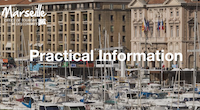 FOR LOTS MORE information about the city, check out the official tourism office’s stylish and useful website. READ MORE
FOR LOTS MORE information about the city, check out the official tourism office’s stylish and useful website. READ MORE
RELATED
 GAZE OUT through the window where Vincent van Gogh once stood as he studied the view seen in his best-loved work, The Starry Night. READ MORE
GAZE OUT through the window where Vincent van Gogh once stood as he studied the view seen in his best-loved work, The Starry Night. READ MORE
 LET THE GAMES BEGIN! Two thousand years ago, gladiators fought to the death at the Arena of Nîmes in southern France. Now, the Great Roman Games are recreated there each year. READ MORE, WATCH VIDEO
LET THE GAMES BEGIN! Two thousand years ago, gladiators fought to the death at the Arena of Nîmes in southern France. Now, the Great Roman Games are recreated there each year. READ MORE, WATCH VIDEO
 WHERE THE KING LED TROOPS TO VICTORY: Agincourt is the site of the climactic battle between France and England in Netflix’s epic The King. Read what it’s like to visit the battlefield… READ MORE
WHERE THE KING LED TROOPS TO VICTORY: Agincourt is the site of the climactic battle between France and England in Netflix’s epic The King. Read what it’s like to visit the battlefield… READ MORE
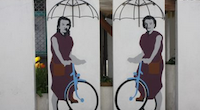 HEROINES WHO DEFIED NAZIS: One of the joys of travel is discovering a story you’d never heard of that leaves a lasting impression, such as this tale of two wartime heroines… READ MORE, WATCH VIDEO
HEROINES WHO DEFIED NAZIS: One of the joys of travel is discovering a story you’d never heard of that leaves a lasting impression, such as this tale of two wartime heroines… READ MORE, WATCH VIDEO
RECOMMENDED
 WELCOME TO OUR WORLD! Afaranwide’s home page – this is where you can find out about our latest posts and other highlights. READ MORE
WELCOME TO OUR WORLD! Afaranwide’s home page – this is where you can find out about our latest posts and other highlights. READ MORE
 TOP 10 VIRTUAL ATTRACTIONS: Many of the world’s most popular tourists sites are closed because of the coronavirus crisis, but you can still visit them virtually while you’re self-isolating. READ MORE
TOP 10 VIRTUAL ATTRACTIONS: Many of the world’s most popular tourists sites are closed because of the coronavirus crisis, but you can still visit them virtually while you’re self-isolating. READ MORE
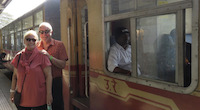 SHIMLA, QUEEN OF THE HILLS: Government officials once retreated to Shimla in the foothills of the Himalayas to escape India’s blazing hot summers. Now tourists make the same journey. READ MORE
SHIMLA, QUEEN OF THE HILLS: Government officials once retreated to Shimla in the foothills of the Himalayas to escape India’s blazing hot summers. Now tourists make the same journey. READ MORE
 TEN THINGS WE LEARNED: Our up-to-the-minute guide to creating a website, one step at a time. The costs, the mistakes – it’s what we wish we’d known when we started blogging. READ MORE
TEN THINGS WE LEARNED: Our up-to-the-minute guide to creating a website, one step at a time. The costs, the mistakes – it’s what we wish we’d known when we started blogging. READ MORE
 TROUBLED TIMES FOR EXPATS: Moving abroad can seem an idyllic prospect, but what happens when sudden upheavals or the inescapable realities of life intrude? READ MORE
TROUBLED TIMES FOR EXPATS: Moving abroad can seem an idyllic prospect, but what happens when sudden upheavals or the inescapable realities of life intrude? READ MORE
Disclosure: Afaranwide is an affiliate of leading travel operators such as Booking.com and Japan Rail Pass. If you purchase through our site we receive, at no additional cost to you, a small commission. We only work with companies we have used and recommend.
LET'S KEEP IN TOUCH!

SUE BRATTLE and COLIN SIMPSON
I FIRST visited the Mediterranean port city of Marseille many years ago, at a time when it had a gritty, tough reputation. In fact, I was advised by a tour guide not to venture into the Panier district because of the threat posed by muggers and pickpockets.
Today this area has been tidied up and made tourist-friendly, and it’s one of our five must-sees. There have been many other improvements, not least the opening of the stunning Museum of European and Mediterranean Civilisations, another of our recommendations, in 2013.
Marseille was designated a European Capital of Culture that year, a further sign of its transition from rough port city to sophisticated metropolis. Despite all this, the usual big-city social problems remain, and poverty is a serious issue.
It’s 2,600 years old, making it France’s oldest city, and it’s the country’s second largest with a population in 2018 of 869,815. In normal, pre-coronavirus times, its rich history, 300 days of sunshine per year and many attractions made it a popular tourist destination. Last year more than 5 million tourists stayed there, and it’s a major player in both the cruise and convention sectors.
It has been used as a backdrop to movies such as The French Connection, Catch Me if You Can, Love Actually and The Count of Monte Cristo. Throw in some great beaches, many more museums and the beautiful Calanques national park, and you have a city with a lot going for it. To help you make the most of a stay there, here are our suggestions for the five things you must see. – CS
Le Vieux Port
Old Port

THIS huge harbour basin packed with fishing boats and leisure craft provides a stunning centrepiece to Marseille, and is the birthplace of the city. A port was first established by Greek traders in 600 BC, and the area continued as a thriving fishing and commercial centre until the 19th century.
Purpose-built deep-water docks able to handle larger boats were then developed along the coast, and the old port became a marina. Boats to attractions such as Château d’If and the Calanques leave from here, as does the popular tourist train to Notre-Dame de la Garde.
The waterside is a great place to wander as you gaze across the lines of boats and soak up the Mediterranean atmosphere. Many of Marseille’s most popular restaurants are in the streets around the port, and it’s probably the best place to sample bouillabaisse, the fish stew that is the city’s most famous dish. There are also waterside bars where football-mad locals gather to watch matches on TV.
A Ferris wheel gives great views across the marina. A fun attraction is a stainless steel art installation where you see your reflection walking upside down on the ceiling. There’s a daily open-air fish market on the quayside, and a museum dedicated to Marseille’s famous soap. And you can head off on a gangster tour retracing “the footsteps of the great Marseille thugs” as you walk past sites associated with organised crime.
The Old Port is particularly spectacular at night, when the light from streetlamps ripples across the water and the floodlit Notre-Dame de la Garde looms above the city on its hilltop perch. All in all, this is just a terrific, atmospheric place to stroll and hang out. – CS
Notre-Dame de la Garde
Our Lady of the Guard

THIS is the enormous church that overlooks Marseille from a hilltop that has functioned as a lookout for centuries and is irresistible to anyone who likes panoramic views.
We walked up the hill on a blustery and cold May Sunday and waited until a service finished for a look inside. Built on a grand scale in the late 1800s, it is designed to inspire awe. It was busy, but there are side chapels where you can sit in quiet contemplation.
In previous incarnations, the site has witnessed the French Revolution (when the chapel there at the time was nationalized), and many royal visits. The current building has been written about by poets and painted by artists. For me, it was all about the views – a sea of terracotta roofs as far as you can see.
Standing up there, you can understand why the gold Virgin Mary which towers over everything keeping an eye on things is known to locals as “Good Mother”. – SB
NEED TO KNOW: Entry to the church is free; there is a small charge for the museum, which is closed on Mondays. Masses are held at 7.25 am, 9 am, and 4.30 pm. Getting there: By foot – it’s steep and takes up to an hour. By little tourist train, leaves from the Old Port. By bus – No 60 leaves from Old Port. By car – lots of parking spaces, car park shuts at 8 pm. There’s a café and gift shop. Its big festival each year is Assumption Day, August 15. Get more info at this website.
Château d’If

THIS forbidding fortress-turned-prison stands on a small fortified island 1.5 kilometres offshore from Marseille. It dates back to 1524 and was built to defend the city and the surrounding coastline from sea-borne attackers.
It later became a prison where religious and political inmates were held. It was a sort of Mediterranean Alcatraz, complete with dangerous offshore currents that made any attempt to escape extremely hazardous.
The fort is most famous as the setting for Alexandre Dumas’s novel The Count of Monte Cristo. The story tells how the fictional count escapes after 14 years in the prison, though in reality there’s no record that anyone managed to get away. One of the cells has a sign above the door that suggests the Man in the Iron Mask – a real historical figure – was incarcerated there. In fact, the masked prisoner who spent 34 years in captivity in various French prisons was never held in Château d’If.
It continued to be used as a prison until the late 19th century, when – aided by the popularity of Dumas’s book – it became a popular visitor attraction. It’s a grim-looking place from the outside, though the interior has been spruced up. As with many visits like this, you find yourself wondering what life was like for the prisoners who were held there. – CS
NEED TO KNOW: Boats to the island leave from the Quai de la Fraternité in the Old Port, at the foot of the Cannebière. There are a number of operators. Boat tickets cover the 20-minute trip plus access to the island. Entry to the fort costs 6 euro per adult; there’s free admittance for under-18s and some other groups.
Guided tours in French can be booked in advance, and you can also explore the site unaccompanied with a guide booklet available in a number of languages. There is an exhibition about Dumas and The Count of Monte Cristo. Closed on Mondays. Tel. +33 (0)6030 62526; (0)6805 27596. Get more info at this website.
Musée des Civilisations de l'Europe et de la Méditerranée
Museum of European and Mediterranean Civilisations, known as Mucem

THE museum with its distinctive covering of black metal lace was built in 2013 and is one of the most spectacular I’ve seen. It stands on reclaimed land at the entry to the port of La Joliette and is attached to the Fort St-Jean by a footbridge.
Its neighbour is the Villa Méditerranée, a research and thought space with an underwater conference room. It’s a good setting for telling the story of humankind in the region. The museum houses a collection which began life in the Trocadero in Paris in 1884, lived at the National Museum of Popular Arts and Traditions in Paris from 1937-2005, and has found a home in Marseille.
It may not seem right to emphasise the building, but the whole complex is a stunning place to visit, while the rooftop views across the port connect you to the lives of the peoples of the Mediterranean. It deservedly won the Council of Europe Museum Prize for 2015. – SB
NEED TO KNOW: Open daily 10 am-8 pm, except Tuesdays. Tickets 11-18 euros, under-18s and certain other categories are free. A stylish temporary exhibition until December 2020 traces the history of five items of clothing – espadrilles, the tank top, the kilt, blue workwear and jogging pants. Get more info at the Mucem website.
Le Panier

MARSEILLE’S oldest district lies north of the Old Port, just a few minutes’ walk away from the quayside. Its revival dates back to 1983, when the city started restoring the area with backing from the European Commission.
Le Panier is the French word for basket. We were told the name was given to the neighbourhood because lots of bakers used to operate there. In fact, according to the city’s tourism office website, it was named after a hotel called Le Logis du Panier that stood there in the 17th century. You can’t believe everything you’re told when you’re a tourist.
It’s a great place to explore on foot as you gaze at historic buildings, walk through interesting sidestreets and stop off for a coffee in a picturesque square. Like parts of cities around the world, the district has become known for its street art. There are some intriguing shops selling hand-made clothes, vintage items and ceramics.
Guided tours are available, but it’s much more fun to do it on your own. In some places there are views across the marina to the basilica perched on its hill.
Notable buildings include the Maison Diamantée, the Hôtel de Cabre and the 12th century Hôtel Dieu – now a swanky Intercontinental hotel. The Accoules church towers over the district and stands on a site used for worship since the sixth century. As you enjoy your relaxing stroll, it’s easy to forget that you’re in the centre of a large, busy city. – CS























NEED TO KNOW: Marseille
GETTING THERE: By air: Marseille Provence Airport has daily flights from all over the world. Passenger info, tel +33 (0) 820 811 414 – website. Shuttle service operates to and from Marseille. By sea: Port Autonome, 23 Place de la Joliette, Tel. +33 (0) 491 39 40 00 helps with cruise lines; Harbour Office of the Old Port, open 24/7, Quai Marcel Pagnol, Tel. +33 (0) 491 73 93 63 deals with yachting berths. By train: St Charles Railway Station has 17 TGV trains a day from Paris, journey takes three hours. The station links with most major European rail lines. Tel +33 800 11 40 23
By road: Three motorway systems from Spain, Italy and Northern Europe converge on the city, which is a one-hour drive from the Camargue and the heart of Provence. The coach station is close to the railway station, tel +33 (0) 891 024 025. Parking your car: Using licence plate recognition technology, the city offers a 30 per cent discount to park your car without tickets. Register at the website.
Taxis: Call 0811 46 90 90 or go to one of 85 taxi ranks around the city.
Consult your hotel staff or tour company about current apps available for geolocation.
September 2020
MORE INFO
 FOR LOTS MORE information about the city, check out the official tourism office’s stylish and useful website. READ MORE
FOR LOTS MORE information about the city, check out the official tourism office’s stylish and useful website. READ MORE
RELATED
 GAZE OUT through the window where Vincent van Gogh once stood as he studied the view seen in his best-loved work, The Starry Night. READ MORE
GAZE OUT through the window where Vincent van Gogh once stood as he studied the view seen in his best-loved work, The Starry Night. READ MORE
 LET THE GAMES BEGIN! Two thousand years ago, gladiators fought to the death at the Arena of Nîmes in southern France. Now, the Great Roman Games are recreated there each May… READ MORE, WATCH VIDEO
LET THE GAMES BEGIN! Two thousand years ago, gladiators fought to the death at the Arena of Nîmes in southern France. Now, the Great Roman Games are recreated there each May… READ MORE, WATCH VIDEO
 WHERE THE KING LED TROOPS TO VICTORY: Agincourt is the site of the climactic battle between France and England in Netflix’s epic The King. Read what it’s like to visit the battlefield… READ MORE
WHERE THE KING LED TROOPS TO VICTORY: Agincourt is the site of the climactic battle between France and England in Netflix’s epic The King. Read what it’s like to visit the battlefield… READ MORE
 HEROINES WHO DEFIED NAZIS: One of the joys of travel is discovering a story you’d never heard of that leaves a lasting impression, such as this tale of two wartime heroines… READ MORE, WATCH VIDEO
HEROINES WHO DEFIED NAZIS: One of the joys of travel is discovering a story you’d never heard of that leaves a lasting impression, such as this tale of two wartime heroines… READ MORE, WATCH VIDEO
RECOMMENDED
 WELCOME TO OUR WORLD! Afaranwide’s home page – this is where you can find out about our latest posts and other highlights. READ MORE
WELCOME TO OUR WORLD! Afaranwide’s home page – this is where you can find out about our latest posts and other highlights. READ MORE
 TOP 10 VIRTUAL ATTRACTIONS: Many of the world’s most popular tourists sites are closed because of the coronavirus crisis, but you can still visit them virtually while you’re self-isolating. READ MORE
TOP 10 VIRTUAL ATTRACTIONS: Many of the world’s most popular tourists sites are closed because of the coronavirus crisis, but you can still visit them virtually while you’re self-isolating. READ MORE
 SHIMLA, QUEEN OF THE HILLS: Government officials once retreated to Shimla in the foothills of the Himalayas to escape India’s blazing hot summers. Now tourists make the same journey. READ MORE
SHIMLA, QUEEN OF THE HILLS: Government officials once retreated to Shimla in the foothills of the Himalayas to escape India’s blazing hot summers. Now tourists make the same journey. READ MORE
 TEN THINGS WE LEARNED: Our up-to-the-minute guide to creating a website, one step at a time. The costs, the mistakes – it’s what we wish we’d known when we started blogging. READ MORE
TEN THINGS WE LEARNED: Our up-to-the-minute guide to creating a website, one step at a time. The costs, the mistakes – it’s what we wish we’d known when we started blogging. READ MORE
 TROUBLED TIMES FOR EXPATS: Moving abroad can seem an idyllic prospect, but what happens when sudden upheavals or the inescapable realities of life intrude? READ MORE
TROUBLED TIMES FOR EXPATS: Moving abroad can seem an idyllic prospect, but what happens when sudden upheavals or the inescapable realities of life intrude? READ MORE
Disclosure: Afaranwide is an affiliate of leading travel operators such as Booking.com and Japan Rail Pass. If you purchase through our site we receive, at no additional cost to you, a small commission. We only work with companies we have used and recommend.
LET'S KEEP IN TOUCH!
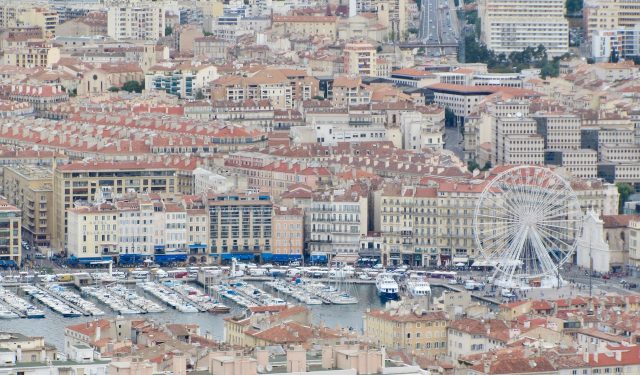
5 Great Things to Do in MARSEILLE

SUE BRATTLE and COLIN SIMPSON
I FIRST visited Marseille in France many years ago, at a time when the Mediterranean port city had a gritty, tough reputation. In fact, I was advised by a tour guide not to venture into the Panier district because of the threat posed by muggers and pickpockets.
Today this area has been tidied up and made tourist-friendly, and it’s one of our five must-sees. There have been many other improvements, not least the opening of the stunning Museum of European and Mediterranean Civilisations, another of our recommendations, in 2013.
Marseille was designated a European Capital of Culture that year, a further sign of its transition from rough port city to sophisticated metropolis. Despite all this, the usual big-city social problems remain, and poverty is a serious issue.
It’s 2,600 years old, making it France’s oldest city, and it’s the country’s second largest with a population in 2018 of 869,815. In normal, pre-coronavirus times, its rich history, 300 days of sunshine per year and many attractions made it a popular tourist destination. Last year more than 5 million tourists stayed there, and it’s a major player in both the cruise and convention sectors.
It has been used as a backdrop to movies such as The French Connection, Catch Me if You Can, Love Actually and The Count of Monte Cristo. Throw in some great beaches, many more museums and the beautiful Calanques national park, and you have a city with a lot going for it. To help you make the most of a stay there, here are our suggestions for the five things you must see. – CS
Le Vieux Port
Old Port

THIS huge harbour basin packed with fishing boats and leisure craft provides a stunning centrepiece to Marseille, and is the birthplace of the city. A port was first established by Greek traders in 600 BC, and the area continued as a thriving fishing and commercial centre until the 19th century.
Purpose-built deep-water docks able to handle larger boats were then developed along the coast, and the old port became a marina. Boats to attractions such as Château d’If and the Calanques leave from here, as does the popular tourist train to Notre-Dame de la Garde.
The waterside is a great place to wander as you gaze across the lines of boats and soak up the Mediterranean atmosphere. Many of Marseille’s most popular restaurants are in the streets around the port, and it’s probably the best place to sample bouillabaisse, the fish stew that is the city’s most famous dish. There are waterside bars where football-mad locals gather to watch matches on TV.
A Ferris wheel gives great views across the marina. A fun attraction is a stainless steel art installation where you see your reflection walking upside down on the ceiling. There’s a daily open-air fish market on the quayside, and a museum dedicated to Marseille’s famous soap. And you can head off on a gangster tour retracing “the footsteps of the great Marseille thugs” as you walk past sites associated with organised crime.
The Old Port is particularly spectacular at night, when the light from streetlamps ripples across the water and the floodlit Notre-Dame de la Garde looms above the city on its hilltop perch. All in all, this is just a terrific, atmospheric place to stroll and hang out. – CS
Notre-Dame de la Garde
Our Lady of the Guard

THIS is the enormous church that overlooks Marseille from a hilltop that has functioned as a lookout for centuries and is irresistible to anyone who likes panoramic views.
We walked up the hill on a blustery and cold May Sunday and waited until a service finished for a look inside. Built on a grand scale in the late 1800s, it is designed to inspire awe. It was busy, but there are side chapels where you can sit in quiet contemplation.
In previous incarnations, the site has witnessed the French Revolution (when the chapel there at the time was nationalized), and many royal visits. The current building has been written about by poets and painted by artists. For me, it was all about the views – a sea of terracotta roofs as far as you can see.
Standing up there, you can understand why the gold Virgin Mary which towers over everything keeping an eye on things is known to locals as “Good Mother”. – SB
NEED TO KNOW: Entry to the church is free; there is a small charge for the museum, which is closed on Mondays. Masses are held at 7.25 am, 9 am, and 4.30 pm. Getting there: By foot – it’s steep and takes up to an hour. By little tourist train, leaves from the Old Port. By bus – No. 60 leaves from Old Port. By car – lots of parking spaces, car park shuts at 8 pm. There’s a café and gift shop. Its big festival each year is Assumption Day, August 15. Get more info at this website.
Château d’If

THIS forbidding fortress-turned-prison stands on a small fortified island 1.5 kilometres offshore from Marseille. It dates back to 1524 and was built to defend the city and the surrounding coastline from sea-borne attackers.
It later became a prison where religious and political inmates were held. It was a sort of Mediterranean Alcatraz, complete with dangerous offshore currents that made any attempt to escape extremely hazardous.
The fort is most famous as the setting for Alexandre Dumas’s novel The Count of Monte Cristo. The story tells how the fictional count escapes after 14 years in the prison, though in reality there’s no record that anyone managed to get away. One of the cells has a sign above the door that suggests the Man in the Iron Mask – a real historical figure – was incarcerated there. In fact, the masked prisoner who spent 34 years in captivity in various French prisons was never held in Château d’If.
It continued to be used as a prison until the late 19th century, when – aided by the popularity of Dumas’s book – it became a popular visitor attraction. It’s a grim-looking place from the outside, though the interior has been spruced up. As with many visits like this, you find yourself wondering what life was like for the prisoners who were held there. – CS
NEED TO KNOW: Boats to the island leave from the Quai de la Fraternité in the Old Port, at the foot of the Cannebière. There are a number of operators. Boat tickets cover the 20-minute trip plus access to the island. Entry to the fort costs 6 euro per adult; there’s free admittance for under-18s and some other groups.
Guided tours in French can be booked in advance, and you can also explore the site unaccompanied with a guide booklet available in a number of languages. There is an exhibition about Dumas and The Count of Monte Cristo. Closed on Mondays. Tel. +33 (0)6030 62526; (0)6805 27596. Get more info at this website.
Musée des Civilisations de l'Europe et de la Méditerranée
Museum of European and Mediterranean Civilisations, known as Mucem

THE museum with its distinctive covering of black metal lace was built in 2013 and is one of the most spectacular I’ve seen. It stands on reclaimed land at the entry to the port of La Joliette and is attached to the Fort St-Jean by a footbridge.
Its neighbour is the Villa Méditerranée, a research and thought space with an underwater conference room. It’s a good setting for telling the story of humankind in the region. The museum houses a collection which began life in the Trocadero in Paris in 1884, lived at the National Museum of Popular Arts and Traditions in Paris from 1937-2005, and has found a home in Marseille.
It may not seem right to emphasise the building, but the whole complex is a stunning place to visit, while the rooftop views across the port connect you to the lives of the peoples of the Mediterranean. It deservedly won the Council of Europe Museum Prize for 2015. – SB
NEED TO KNOW: Open daily 10 am-8 pm, except Tuesdays. Tickets 11 to 18 euros, under-18s and certain other categories are free. A stylish temporary exhibition until December 2020 traces the history of five items of clothing – espadrilles, the tank top, the kilt, blue workwear and jogging pants. Get more info at the Mucem website.
Le Panier

MARSEILLE’S oldest district lies north of the Old Port, just a few minutes’ walk away from the quayside. Its revival dates back to 1983, when the city started restoring the area with backing from the European Commission.
Le Panier is the French word for basket. We were told the name was given to the neighbourhood because lots of bakers used to operate there. In fact, according to the city’s tourism office website, it was named after a hotel called Le Logis du Panier that stood there in the 17th century. You can’t believe everything you’re told when you’re a tourist.
It’s a great place to explore on foot as you gaze at historic buildings, walk through interesting sidestreets and stop off for a coffee in a picturesque square. Like parts of cities around the world, the district has become known for its street art. There are some intriguing shops selling hand-made clothes, vintage items and ceramics.
Guided tours are available, but it’s much more fun to do it on your own. In some places there are views across the marina to the basilica perched on its hill.
Notable buildings include the Maison Diamantée, the Hôtel de Cabre and the 12th century Hôtel Dieu – now a swanky Intercontinental hotel. The Accoules church towers over the district and stands on a site used for worship since the sixth century. As you enjoy your relaxing stroll, it’s easy to forget that you’re in the centre of a large, busy city. – CS























NEED TO KNOW: Marseille
GETTING THERE: By air: Marseille Provence Airport has daily flights from all over the world. Passenger info, tel +33 (0) 820 811 414 – website. Shuttle service operates to and from Marseille. By sea: Port Autonome, 23 Place de la Joliette, Tel. +33 (0) 491 39 40 00 helps with cruise lines; Harbour Office of the Old Port, open 24/7, Quai Marcel Pagnol, Tel. +33 (0) 491 73 93 63 deals with yachting berths. By train: St Charles Railway Station has 17 TGV trains a day from Paris, journey takes three hours. The station links with most major European rail lines. Tel +33 800 11 40 23
By road: Three motorway systems from Spain, Italy and Northern Europe converge on the city, which is a one-hour drive from the Camargue and the heart of Provence. The coach station is close to the railway station, tel +33 (0) 891 024 025. Parking your car: Using licence plate recognition technology, the city offers a 30 per cent discount to park your car without tickets. Register at the website.
Taxis: Call 0811 46 90 90 or go to one of 85 taxi ranks around the city.
Consult your hotel staff or tour company about current apps available for geolocation.
September 2020
MORE INFO
FOR LOTS MORE information about the city, check out the official tourism office’s stylish and useful website. READ MORE
RELATED
 GAZE OUT through the window where Vincent van Gogh once stood as he studied the view seen in his best-loved work, The Starry Night. READ MORE
GAZE OUT through the window where Vincent van Gogh once stood as he studied the view seen in his best-loved work, The Starry Night. READ MORE
 LET THE GAMES BEGIN! Two thousand years ago, gladiators fought to the death at the Arena of Nîmes in southern France. Now, the Great Roman Games are recreated there each May… READ MORE, WATCH VIDEO
LET THE GAMES BEGIN! Two thousand years ago, gladiators fought to the death at the Arena of Nîmes in southern France. Now, the Great Roman Games are recreated there each May… READ MORE, WATCH VIDEO
 WHERE THE KING LED TROOPS TO VICTORY: Agincourt is the site of the climactic battle between France and England in Netflix’s epic The King. Read what it’s like to visit the battlefield… READ MORE
WHERE THE KING LED TROOPS TO VICTORY: Agincourt is the site of the climactic battle between France and England in Netflix’s epic The King. Read what it’s like to visit the battlefield… READ MORE
 HEROINES WHO DEFIED NAZIS: One of the joys of travel is discovering a story you’d never heard of that leaves a lasting impression, such as this tale of two wartime heroines… READ MORE, WATCH VIDEO
HEROINES WHO DEFIED NAZIS: One of the joys of travel is discovering a story you’d never heard of that leaves a lasting impression, such as this tale of two wartime heroines… READ MORE, WATCH VIDEO
RECOMMENDED
 WELCOME TO OUR WORLD! Afaranwide’s home page – this is where you can find out about our latest posts and other highlights. READ MORE
WELCOME TO OUR WORLD! Afaranwide’s home page – this is where you can find out about our latest posts and other highlights. READ MORE
 TOP 10 VIRTUAL ATTRACTIONS: Many of the world’s most popular tourists sites are closed because of the coronavirus crisis, but you can still visit them virtually while you’re self-isolating. READ MORE
TOP 10 VIRTUAL ATTRACTIONS: Many of the world’s most popular tourists sites are closed because of the coronavirus crisis, but you can still visit them virtually while you’re self-isolating. READ MORE
 SHIMLA, QUEEN OF THE HILLS: Government officials once retreated to Shimla in the foothills of the Himalayas to escape India’s blazing hot summers. Now tourists make the same journey. READ MORE
SHIMLA, QUEEN OF THE HILLS: Government officials once retreated to Shimla in the foothills of the Himalayas to escape India’s blazing hot summers. Now tourists make the same journey. READ MORE
 TEN THINGS WE LEARNED: Our up-to-the-minute guide to creating a website, one step at a time. The costs, the mistakes – it’s what we wish we’d known when we started blogging. READ MORE
TEN THINGS WE LEARNED: Our up-to-the-minute guide to creating a website, one step at a time. The costs, the mistakes – it’s what we wish we’d known when we started blogging. READ MORE
 TROUBLED TIMES FOR EXPATS: Moving abroad can seem an idyllic prospect, but what happens when sudden upheavals or the inescapable realities of life intrude? READ MORE
TROUBLED TIMES FOR EXPATS: Moving abroad can seem an idyllic prospect, but what happens when sudden upheavals or the inescapable realities of life intrude? READ MORE
Disclosure: Afaranwide is an affiliate of leading travel operators such as Booking.com and Japan Rail Pass. If you purchase through our site we receive, at no additional cost to you, a small commission. We only work with companies we have used and recommend.




Looks amazing, so many movies shot here. Love the castle. I’m sure I will
check it when I will go to Provence..